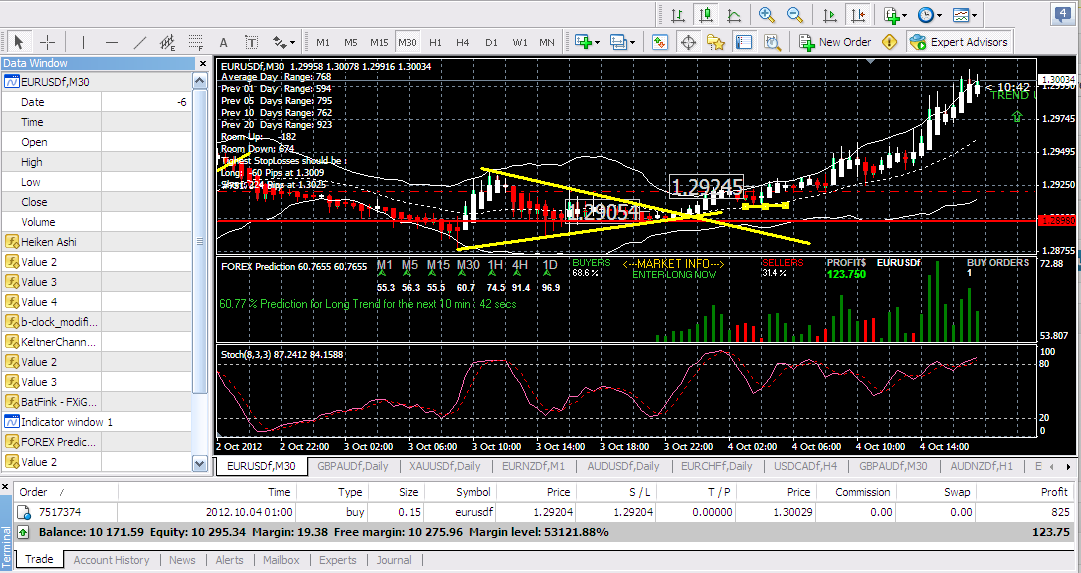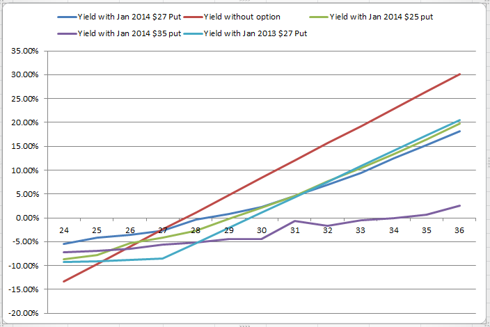Using options to protect positions
Post on: 8 Июнь, 2015 No Comment

Could using options or using stop orders be the better method to mitigate risk in a traders position?
Lets first define a stop order. For an existing open short position in a futures contract, equity or ETF, an order to buy is placed at a specific price above the current market price in order to liquidate the position. For an existing long position in a futures contract, equity or ETF, an order to sell is placed at a specific price below the current market price in order to liquidate the position. As soon as a trade takes place at that specific price or higher, the stop order is triggered. The converse is true for an existing open long position. The vast majority of stop orders are market orders upon being activated, but they also may be entered as limit orders. The stop limit order ensures a specific price while at the same time defeating the original purpose of the order. In a runaway market, it might never be filled.
Lets use BIDU, known as the Chinese Google, as an example. BIDU is shorted at 139. A stop loss order is placed at 141. The tolerance for loss is less than two percent. If BIDU drops to 135 during the day, the stop order can be lowered to 137.50, thereby guaranteeing a profit. If BIDU continues to head south, the stop order can be lowered continuously. If the BIDU short position is bought back at 133, there is a profit of $600 for each round lot (100 shares) that is shorted.
An alternative to placing a stop order above the market would be to purchase a call option near the 141 price level. One disadvantage to using a call option is the lack of precision in using the strike prices. There is not a 141 strike, but there is a 140 strike. A call option acts as a built in stop order. Because the owner of a Nov 140 call has the right to own 100 shares of stock at 140, the losses are stopped out at 140. The difference is that a premium must be paid for the use of this type of stop order. In this case, BIDU Nov 140 calls would cost 9.20 ($920) per option.

The premium consists of both expiration value (sometimes referred to as intrinsic value) and time value (sometimes referred to as extrinsic value). The expiration value is the in-the-money portion of the option premium. At the end of the expiration cycle there is no time value left; only the expiration value that is in-the-money remains. Expiration value is an objective measurement. Time value is subject to the whims of supply and demand. That throws an extra wrench into the works. Because the Nov 140 calls are above where the stock was sold, the premium consists purely of time value. If the BIDU short position is bought back at 133, the $600 profit per round lot still exists. There is a loss in the call that was purchased, however. The Nov 140 call probably would lose about 2.50 ($250) per option. The other disadvantage of using a call vs. a stop order is that the stop order can be lowered continuously at a specific price. The call protection could be lowered to 135 by selling out the 140 calls and purchasing the 135 calls. Once again the uncertainty of the potential change in the price level of time value comes into play.
Now lets take a look at what happens when the stocks rises after the short position at 139 is established. When BIDU trades at 141 or higher, the stop order is activated. If BIDU is bought back at 141.20, a loss of $220 per round lot is sustained. If the call position is unwound at the same time, then the $220 loss on the stock is softened by the $100 gain in the call that was purchased. There is another very attractive benefit to using a call in lieu of a stop order. If BIDU touches 141, there is no obligation to liquidate the position. Lets say that it runs up to 141.50 and then reverses course and heads south. If it heads all the way down to 133, the stop order would have lost $220 while the call option strategy would have netted $350.














